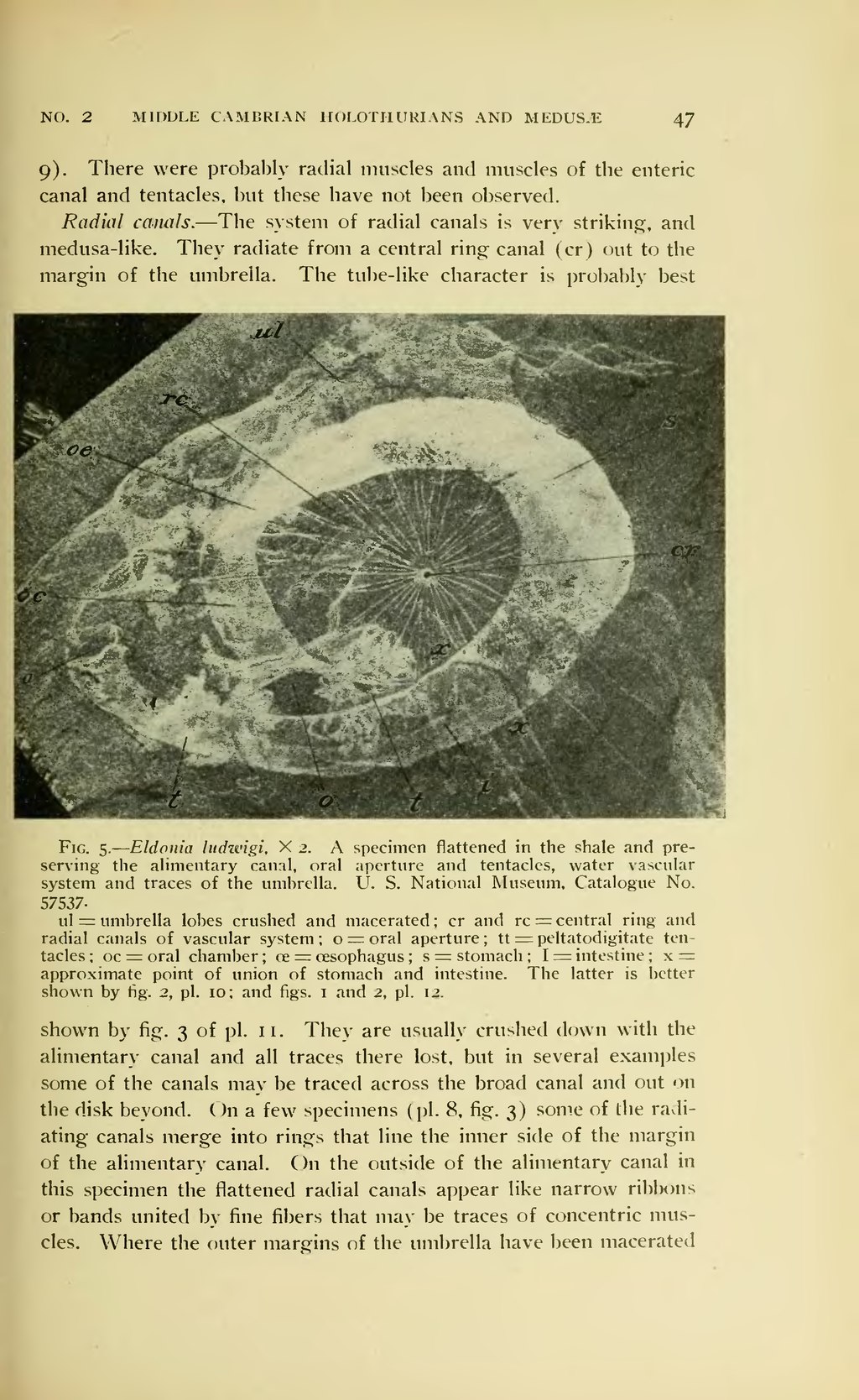9). There were probably radial muscles and muscles of the enteric canal and tentacles, but these have not been observed.
Radial canals.—The system of radial canals is very striking, and medusa-like. They radiate from a central ring canal (cr) out to the margin of the umbrella. The tube-like character is probably best
shown by fig. 3 of pl. 11. They are usually crushed down with the alimentary canal and all traces there lost, but in several examples some of the canals may be traced across the broad canal and out on the disk beyond. On a few specimens (pl. 8, fig. 3) some of the radiating canals merge into rings that line the inner side of the margin of the alimentary canal. On the outside of the alimentary canal in this specimen the flattened radial canals appear like narrow ribbons or bands united by fine fibers that may be traces of concentric muscles. Where the outer margins of the umbrella have been macerated

